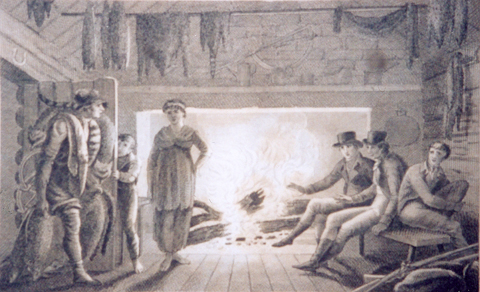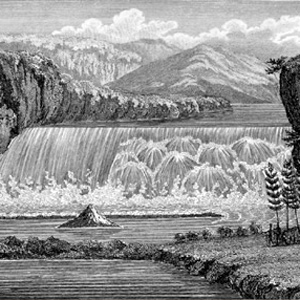Upon his return to Philadelphia in 1807, Lewis hired an “able pencil,” John James Barralet for forty dollars to make “two Drawings water falls.”[1]Donald Jackson, ed., Letters of the Lewis and Clark Expedition with Related Documents, 1873-1854 (2nd ed., Urbana: University of Illinois Press, 1978), 2:463n. Barralet (c. 1747-1815) emigrated to … Continue reading Lewis probably showed the artist his own sketches of the “stronger features” of the grand falls and did his best to refine the details verbally, striving to recapture the essence of the “sublime” he had recognized in the scene.[2]Noah Webster, in his Compendious Dictionary of the English Language (1806), defined “sublime” simply as “lofty or grand style.” An engaging essay on the history of this … Continue reading
Featured Works


Perhaps the naturalist most influenced by Lewis and Clark was Alexander Wilson. Considered by many as the “Father of American Ornithology” he actively used their writings and specimens to complete his own works.


Alexander Wilson’s epic poem The Foresters, was a tediously versified 2,210-line diary of his twelve hundred mile round-trip hike from Philadelphia to Niagara Falls in the autumn of 1804.


After Lewis’s preliminary sketch, later artists and photographers contributed to the visual documentation of the “sublimely grand” waterfall including Barralet, Gustavus Sohon, A. E. Mathews, and F. Jay Haynes.
Notes
| ↑1 | Donald Jackson, ed., Letters of the Lewis and Clark Expedition with Related Documents, 1873-1854 (2nd ed., Urbana: University of Illinois Press, 1978), 2:463n. Barralet (c. 1747-1815) emigrated to the U.S. from Ireland in 1795 and eventually set up shop at Eleventh and Filbert Streets in Philadelphia. |
|---|---|
| ↑2 | Noah Webster, in his Compendious Dictionary of the English Language (1806), defined “sublime” simply as “lofty or grand style.” An engaging essay on the history of this Enlightenment-era concept is Albert Furtwangler’s “The American Sublime,” in Acts of Discovery: Visions of America in the Lewis & Clark Journals (Urbana: University of Illinois Press, 1993), 23-51. See also on this site Sublimely Grand Fall. |
